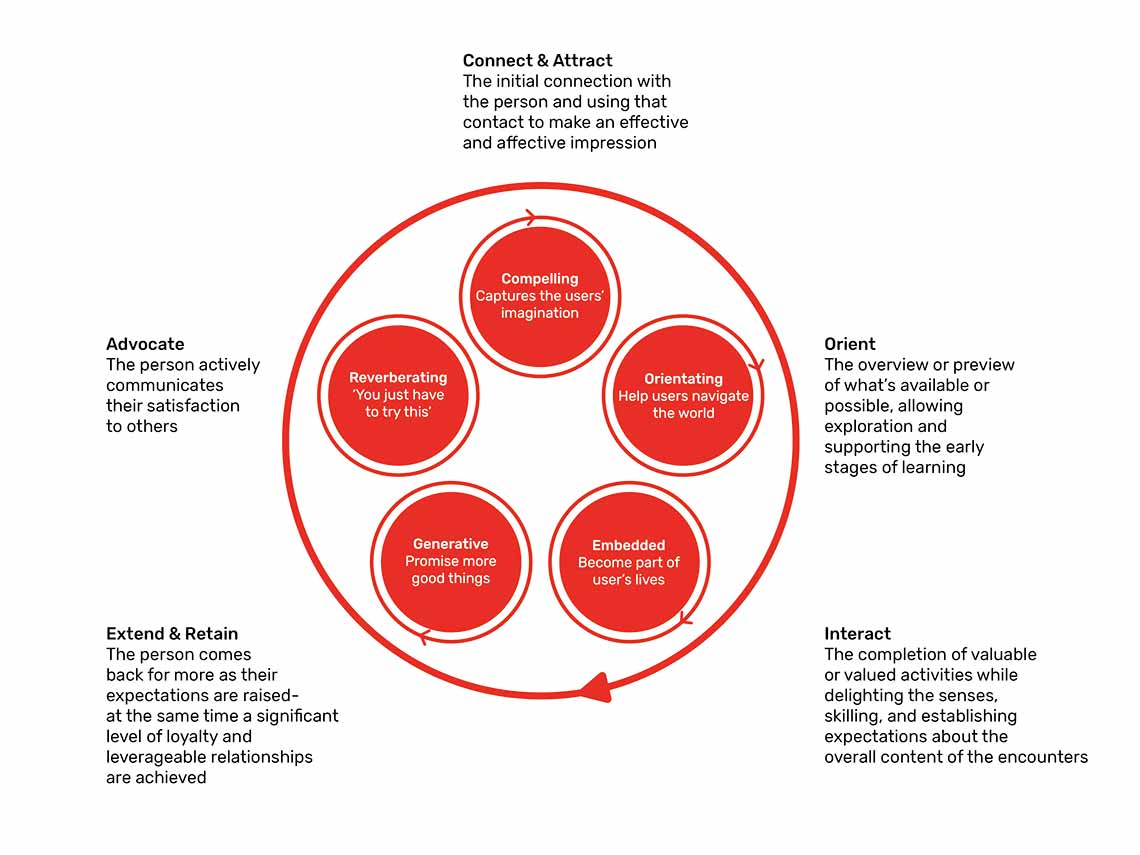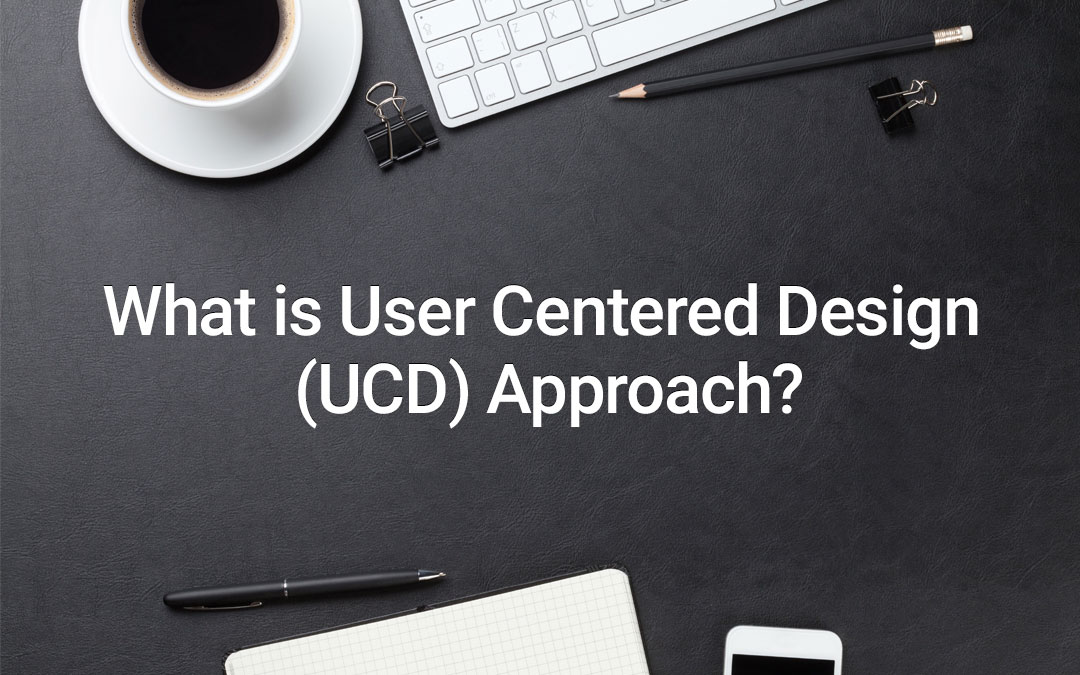Design when inspired by people fuels ideas. It unleashes creative abilities by giving way to concepts that are emotionally meaningful as well as functional.
As a UX practitioner, I always associated user goals as the core aspect of UX design because they form the essence of user experience and user-centered design approach.
Yes, if you want a terrific UX, then you must take users’ needs at priority. According to the user-centered design methodology, the design should cater to the end-goal set for the audience and focus on the impact it has on the audience’s behavior.
The approach is more intuitive and recognizes patterns that help to give desirable solutions, all within natural contexts. A human-centered design method is-
- Considerate - Such designs are more empathetic as they are inspired by the needs and motivations of the people. Be it parents, children, neighbors, colleagues and strangers who are a part of the community; everyone has a say.
- Collective - User-centered design approach works on collaborative lines as here various minds are at work, not one. It takes into account multiple viewpoints and nurtures from each others’ creativity.
- Positive - The methodology inspires to create change. Extending optimism, it deems design to be a powerful process in spite of all the constraints of time, effort and budget hovering challenges.
- Experimental - If you are always on the lookout of perfection, there are chances you will shirk away from taking risks and avoid changes. This approach liberates through learning and encourages you to take up more aspects as experiments. It makes you realize that new and reformed things are meant to be real.

1. Clear With Objectives
Foreseeing the desired end result and marking it as the main agenda can be a great guiding factor in human-centered design. Sticking to the mission and vision can motivate you to stay on the path that is every bit user-centric. It is important to keep your goals realistic and focused on users’ needs as that what drives the purpose of the project.
Growth has its pace and comes when you accept accountability for your successes and failures and take them in spirit and stride for the future.
2. Focus On Audience
To fulfill your users’ needs, you must be acquainted with the kind of audience you serve. Even personas can be useful in this case as you get a fair idea of their expectations and requirements from your site. Efficient personas somewhat depict a real person and unfold the journey experienced with you.
For creating realistic personas, you should undergo primary and secondary research, do user analytics and have other substantial data that can back it.
Personas divide the audience into separate groups which facilitate better communication with the end-user. The categories can be based on regions, lifestyle, or user journeys to get an accurate picture of the average user in the digital realm.
Personas represented with detailed information can be helpful in taking powerful design decisions. More complex the audience, greater is the difficulty in filtering personas to a reasonable number.
So, a better approach will be to segregate your audience as per their behavior in your industry. This way you can find common factors among the different groups and get down to manageable profiles.
3. Frame Right Questions
If you are not able to fire up with ideas or if innovation seems a far game, it is likely that you are asking the wrong questions. It is important to frame the problem in human-centered terms to get consequential results.
An approach that has questions that are more user-oriented such as – how can the users navigate easily? or how can we reward our most loyal customers? can lead to better brainstorming with minds bubbling with ideas and invigorating sense of optimism.
Right questions can help to trace the motives of users that can drive them to connect with your product.
4. Users Come First
To deliver meaningful UX, it is essential to follow the user-centered design as it reduces redundancy by giving the users what they might expect and find completely digestible.
Old models leave no room for changes and work more like funnels. But new models incorporate innovation and permit users to explore and search what is most suitable to them.
Creators often optimize their design so that the audience can access their area of interest easily. They bring forth information which the users might not even know they need. To increase usability and the level of audience engagement, you must build a flexible design that has layers and gives the users power to skim the surface and delve deeper into what they find relevant.
Keep into account their appetite for information so that you can provide impactful content during their interaction with the site.
Landing pages draw maximum users as it initiates the search and gives them the opportunity to find what they need. So, it is important to entice them here by giving facts on an article or quotes as teasers, whatever that makes them attracted to read the whole thing.
The user-centered design must come as a problem solver for the users and put an end to their search. Hence, it is advisable to jot down as many hypothetical problems you think users might want to solve with the features beforehand so as to not leave any point of dissatisfaction.
5. Track The Feedback
Amidst all the strict deadlines, you might get too casual with collecting feedback and put it off to ease the work. That’s where you can go wrong as feedback gives you an in-depth insight into the users’ perspectives.

You can analyze the extent of assumptions, discover ways for improvement and even get inspiration for groundbreaking ideas. Feedback need not be formal or lengthy.
As a matter of the fact, you can gather great responses from rough prototypes rather than full structured designs as participants don’t bother about offending anyone at early stages. Interactive prototypes are indeed the best for less directed feedback.
Remember not to counteract their questions or defend your prototype during the process. Also, if you want to measure the parameters of a valuable product in the consumer’s eyes take hold of the competitor’s product and understand their plus points.
Feedback can also reveal certain anxieties that the users have to pertain to the product. Thus, with the user-centered approach, you can know the nuances of user behavior and craft your product with strategic design.
6. Exact Prototypes
These days the concept of minimum viable product (MVP) has become a major guideline in the design process. Besides iterative, agile development, the spirit to learn with designing governs the human-centered approach.
Before you release your MVP, consider about the prototypes that you can make inexpensively to evaluate your biggest product assumptions. Afterwards, test, iterate, test again and then keep on testing and iterating. With alternative flows and range of screen designs in prototypes, it serves as a great tool to validate your experimentation with designs.
7. Design As a Team
Design process should always be extrovert. Great minds when at work produce great results. In human-centered design, ideas are articulated together. This way you can advance your thinking and bring different frames to work. Fresh thinking can generate innovative solutions which will enhance the standard of product developed. Remember, whenever a new idea comes on surface, it is the team’s idea not a single individual’s. You must have a shared ownership towards concepts to give rise to a user-centric product.
If everyone is after hoarding the ideas and establishing claims it can make the whole process of creating a struggle and ward off the very purpose at hand. Even using language like ‘we’ and ‘our’ instead of ‘my’ and ‘mine’ can make a big difference in the approach. Note, it is not about taking credit as no good idea belongs to a single person. In the end, it is about the quality of the idea and the overall growth of the team.
8. Implement In Action
A competent design results from the synergy of your organizational goals and your users’ needs. It works in unison and produces a structured design that gives breakthrough product experiences.
Already with the constraint of limited resources, it is best to have a cohesive design plan that can give a high return on investment through these resources. A plan can’t be of much use unless it is implemented.
So, embrace the strategies by taking data-driven decisions followed by thorough research. Give substance to your strategy by getting buy-in on the plan across the entire organization. Never forget to lose focus on the users as mission-driven companies gain maximum out of their relationships with customers.
Your organization should be fully acquainted with the insights you have gathered while developing the design principles in order to maintain a balance of the company’s goals with that of the users. In case of a doubt, place your users’ needs at priority to get a high rate of engagement with the product.
No matter what, make sure to maintain transparency during the entire process by fulfilling all the needs of the stakeholders and establishing clear communication on goals to enforce change efficiently.
Now, change can be tricky so prepare your leadership team in advance and ask them to anchor the strategy with accountability. Never forget that leaders must understand, endorse and communicate effectively and also if required defend the strategy with its positive impact on the brand.
Final Thoughts
User-centered design approach starts with the people you are designing for and ends with solutions that are catered to fulfill their needs. Be it the ideas or prototypes, the basis of the design involves empathy with people that gives rise to innovative solutions rendering delightful experiences. First, you get inspired by the people and understand their needs, then comes the ideation in which you make use of opportunities and prototype solutions and finally, you implement those plans to make solutions come to life. By keeping people at the heart of the process, human-centered approach is a sure short formula for success as it never forgets the essence of designing-‘user’.
Images Credit : https://dribbble.com



